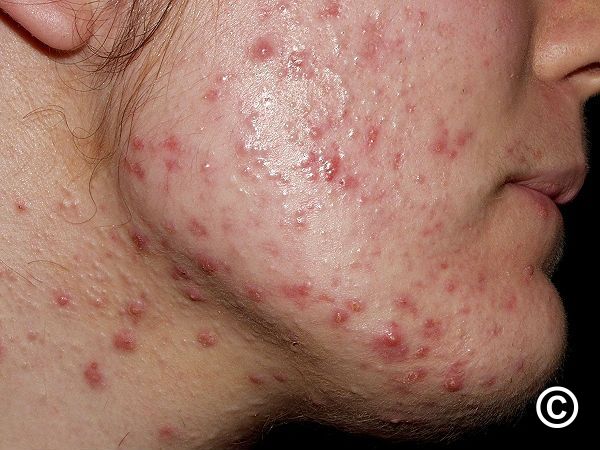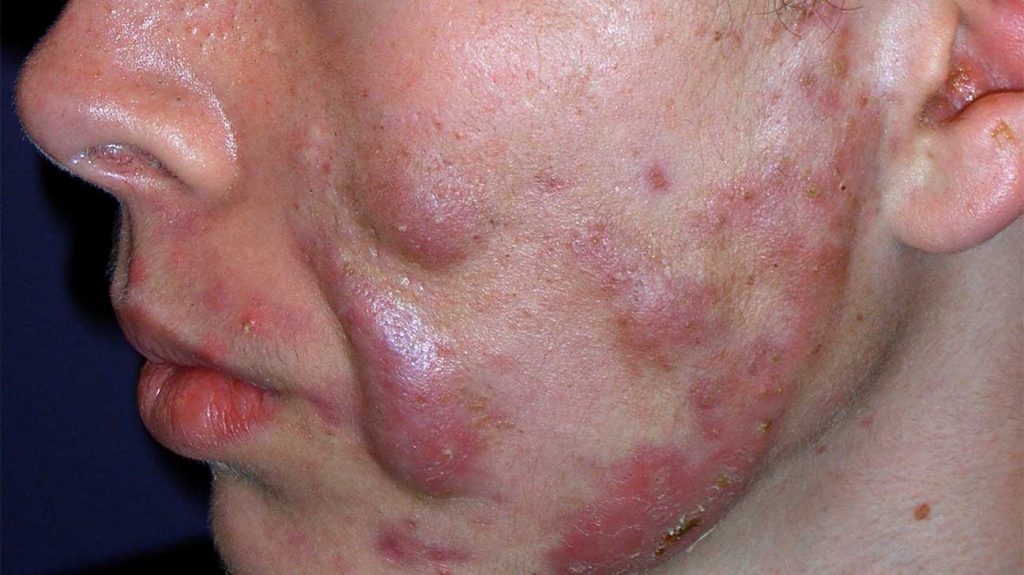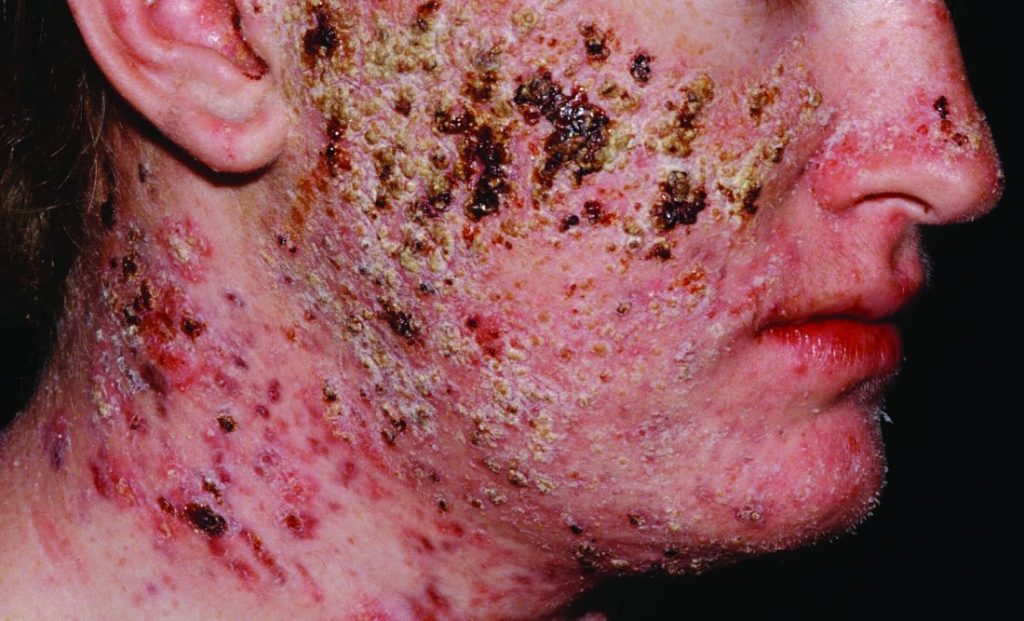
Acne is a disfiguring disorder of the pilosebaceous unit, usually starting between the ages
of 12 and 14, that is experienced to some extent by almost all teenagers. Acne may persist
into adult life, and we seem to be seeing more acne in older women. Pathogenesis is
multifactorial.

What should I ask?
• When did the acne start? how bad is it today?
• What impact is the acne having on the patient’s life? Acne may have a major
psychosocial impact, eroding self-confidence and causing depression or even suicide.
• What treatment has the patient used and for how long? Most acne treatments take up to
4 months to have a maximal effect.
• How are topical preparations, such as benzoyl peroxide or topical retinoids, being
applied—all over the face or trunk (as they should be) or just on ‘spots’? Any adverse
effects such as irritation of the skin?
• Oral antibiotics—most patients will need prolonged treatment for several years. What
does the patient mean by ‘taking a course’?
• What else is being applied to the skin—greasy cosmetics or pomades?
• What is the patient’s occupation? Is he or she in a hot or humid environment, working
with tars or oils, or wearing a cap that occludes the forehead?
• Is trauma irritating hair follicles (acne mechanica)—friction under chin straps, helmets,
or shoulder pads (American footballers), or repeated rubbing of the face with exfoliative
creams?
• Is the patient taking drugs that might exacerbate acne?
• Refractory severe acne.

What should I look for?
• Acne affects the face and/or upper trunk. If acne is in an unusual or asymmetrical
distribution, could this be related to an external factor?
• More than one type of lesion: pustules, papules, comedones (blackhead = open
comedone; whitehead = closed comedone), nodules, cysts, and scars (deep ‘ice-pick’ or
flat).
• Record the types of lesions that are present, so you can monitor the outcome of
treatment.
• Do comedones predominate? Suggests exposure to tar or chlorinated hydrocarbons.
Could this be pomade acne on the forehead?
• Signs of virilization such as hirsutism. Check for cliteromegaly if you suspect
virilization.
• HAIR-AN syndrome.
• Even mild acne may cause acne keloids or, in dark skin, long-lasting
hyperpigmentation. Prolonged courses of minocycline may cause hyperpigmentation in
scars.
Variants of acne :
• Acne ‘excoriée de la jeune fille’: young girls with mild acne, but obsessional picking
scars the skin. Difficult to manage. Even mild disease may need systemic treatment.
• Neonatal and infantile acne: usually face. May persist until age 3 or 4. Consider inhaled
corticosteroids as a cause.
• Acne conglobata: severe acne with grouped comedones, deep nodules, and abscesses
with sinuses oozing pus.
• Acne fulminans: nodulocystic acne, fever, and joint pains
• Synovitis, acne, pustulosis, hyperostosis, osteitis (SAPHO) syndrome.
• PAPA syndrome: rare AD auto-inflammatory disease.
• PASH syndrome: rare auto-inflammatory syndrome (pyoderma gangrenosum, acne,
hidradenitis suppurativa).
• Comedo-like acneiform lesions (chloracne) associated with exposure to dioxin.